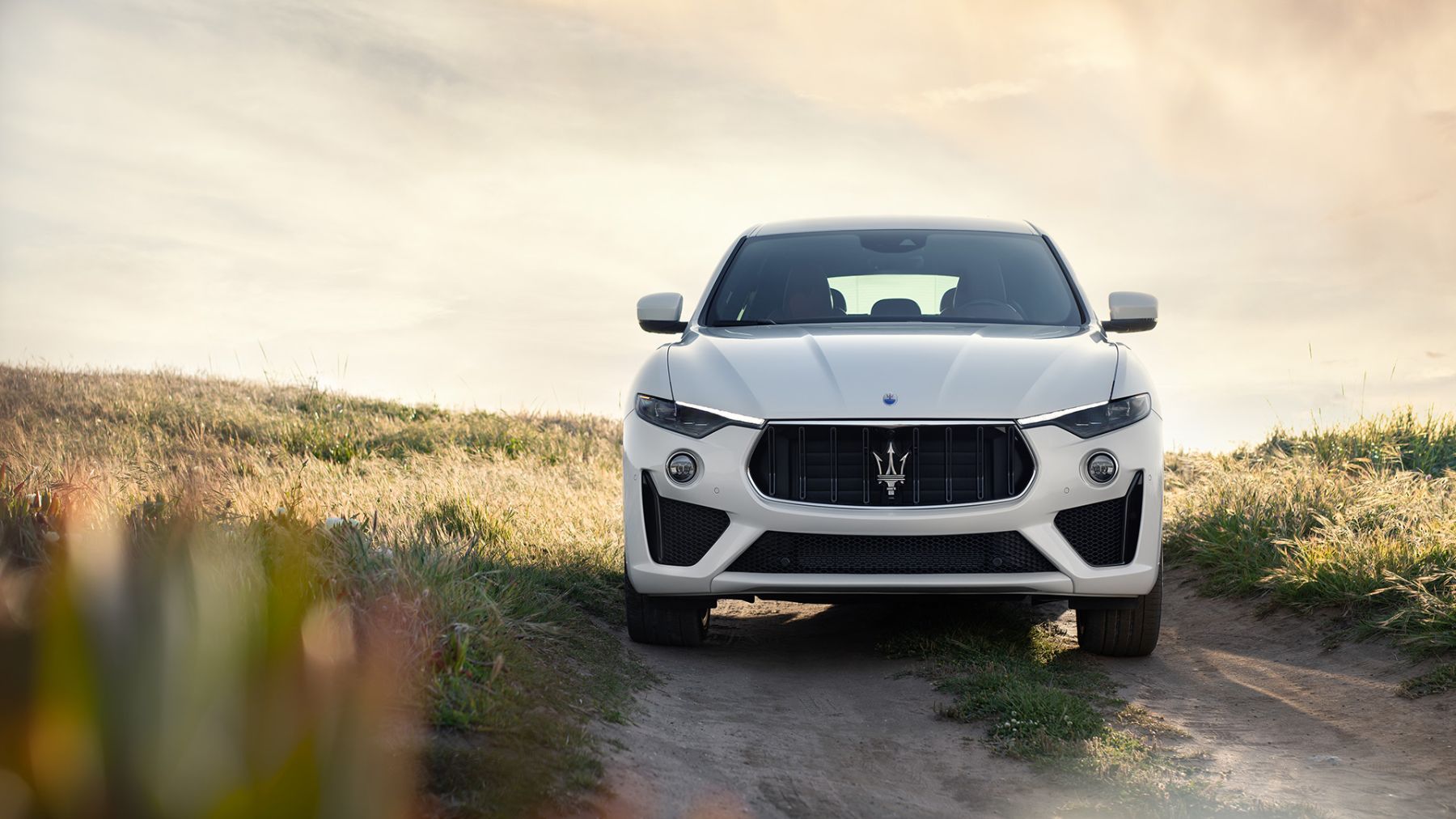
2020 Maserati Levante GTS V8 (Photo Credit to Maserati)
The mere mention of Maserati
Some say the name and it conjures up images of exclusive GTs from the 1950s through early 1970s, with names like 3500 GT, Mistral, Mexico, Ghibli, Bora and Khamsin.
Others think first of historic Grand Prix cars and sports racers, including the legendary 450S, while a growing number are proud to drive their new Maserati sedans, GT coupes and convertibles and even the SUV.
But Maserati is full of surprises. The best-selling model now is its SUV, the Levante.
And you might be shocked to learn that Maserati’s next GT coupe may be an electric vehicle.
Such are the realities of turning a former boutique luxury marque into one with a more sustainable business model. Maserati, which traces its lineage back more than a century, has been through almost as many ups and downs as fellow Italian exotic marque Lamborghini. Today the marque has found stability under Fiat control (now Fiat Chrysler Automobiles), but the road by which it got there is interesting.
Racing before Ferrari
The Maserati brothers began building and racing Grand Prix cars in 1914, with the first cars called “Maserati” arriving in 1926.
That year, a Maserati won its class in the Targa Florio, with Alfieri Maserati driving. The trident that Maserati adopted as its symbol was inspired by the spear depicted with Roman mythology’s god of the sea, Neptune, and specifically the one in the Fountain of Neptune statue in Maserati’s original base, Bologna.
The marque became a major force on the Grand Prix circuit, and the Maserati 8CTF won the Indianapolis 500 in 1939 and 1940, with Wilbur Shaw driving. In addition, Juan Manuel Fangio became F1 Champion in 1954 and 1957 driving the Maserati 250F.
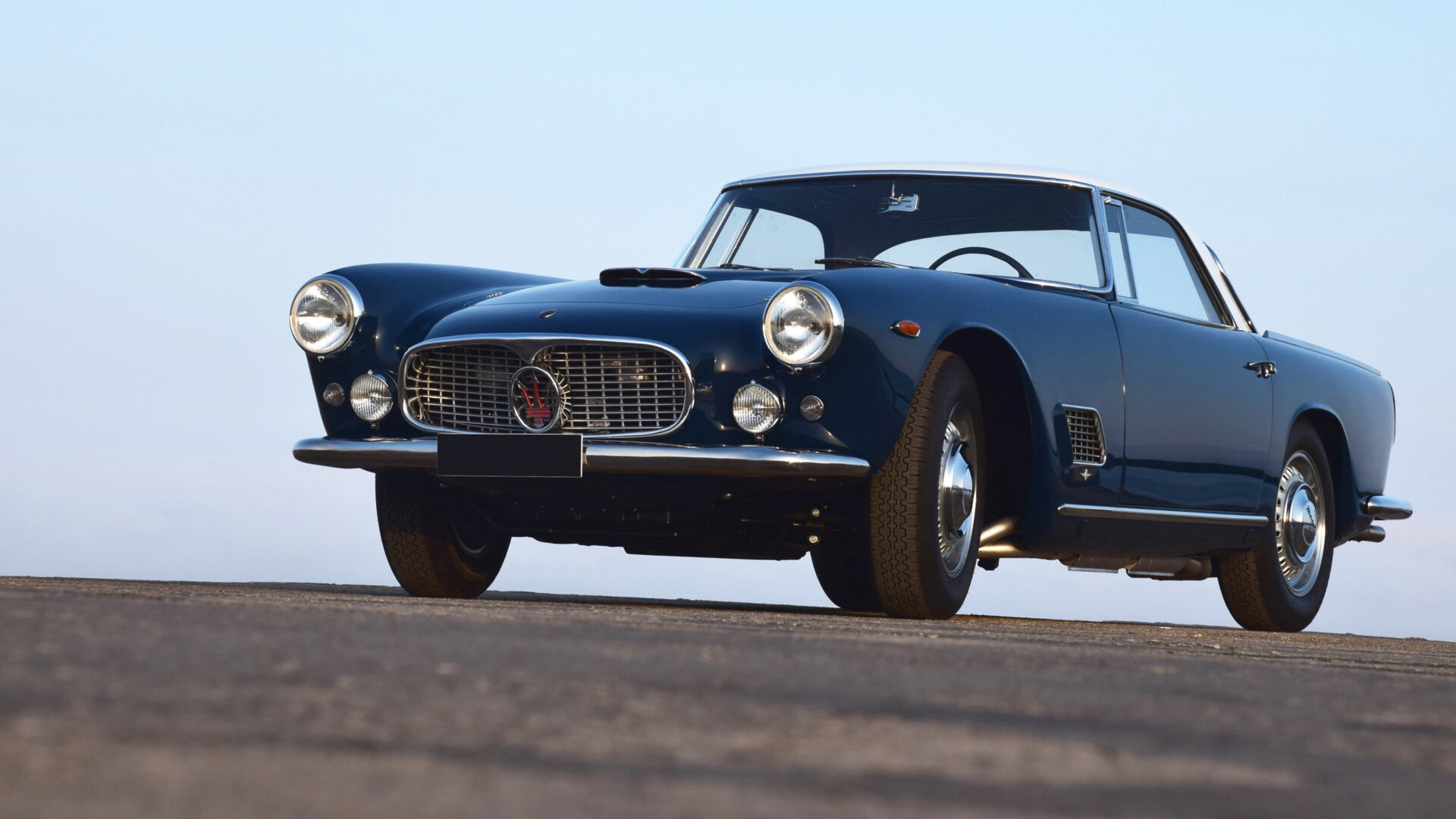
1949 Maserati A6 (Photo Credit to Scuderia Azzurra GmbH) 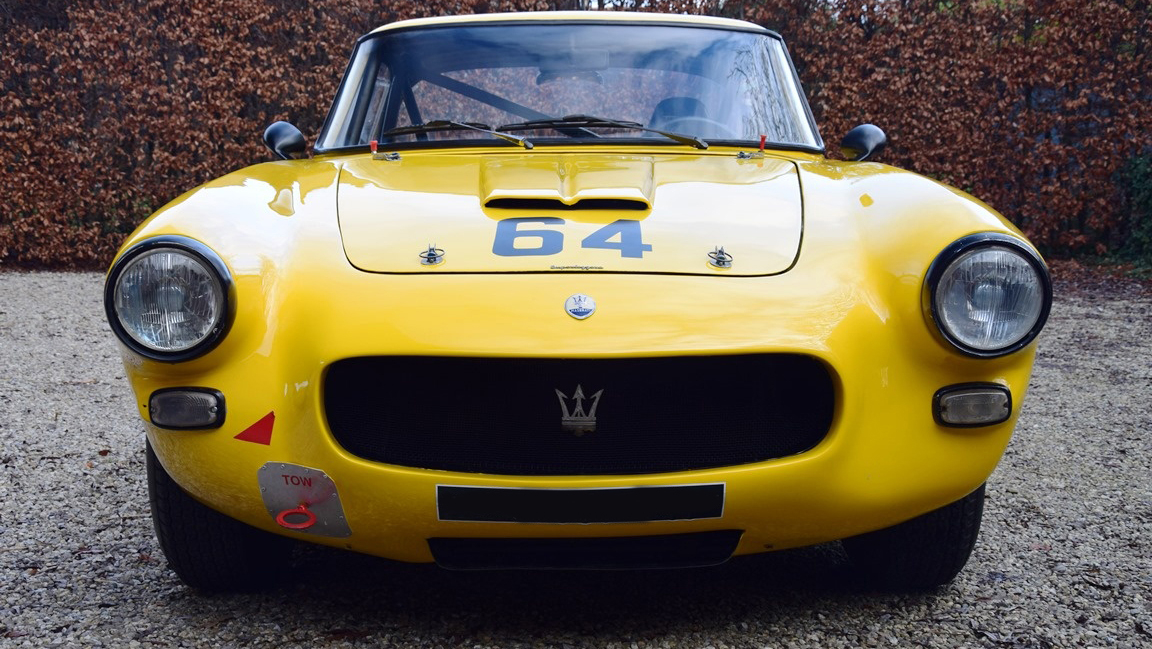
1961 Maserati 3500 (Photo Credit to Albion Motorcars) 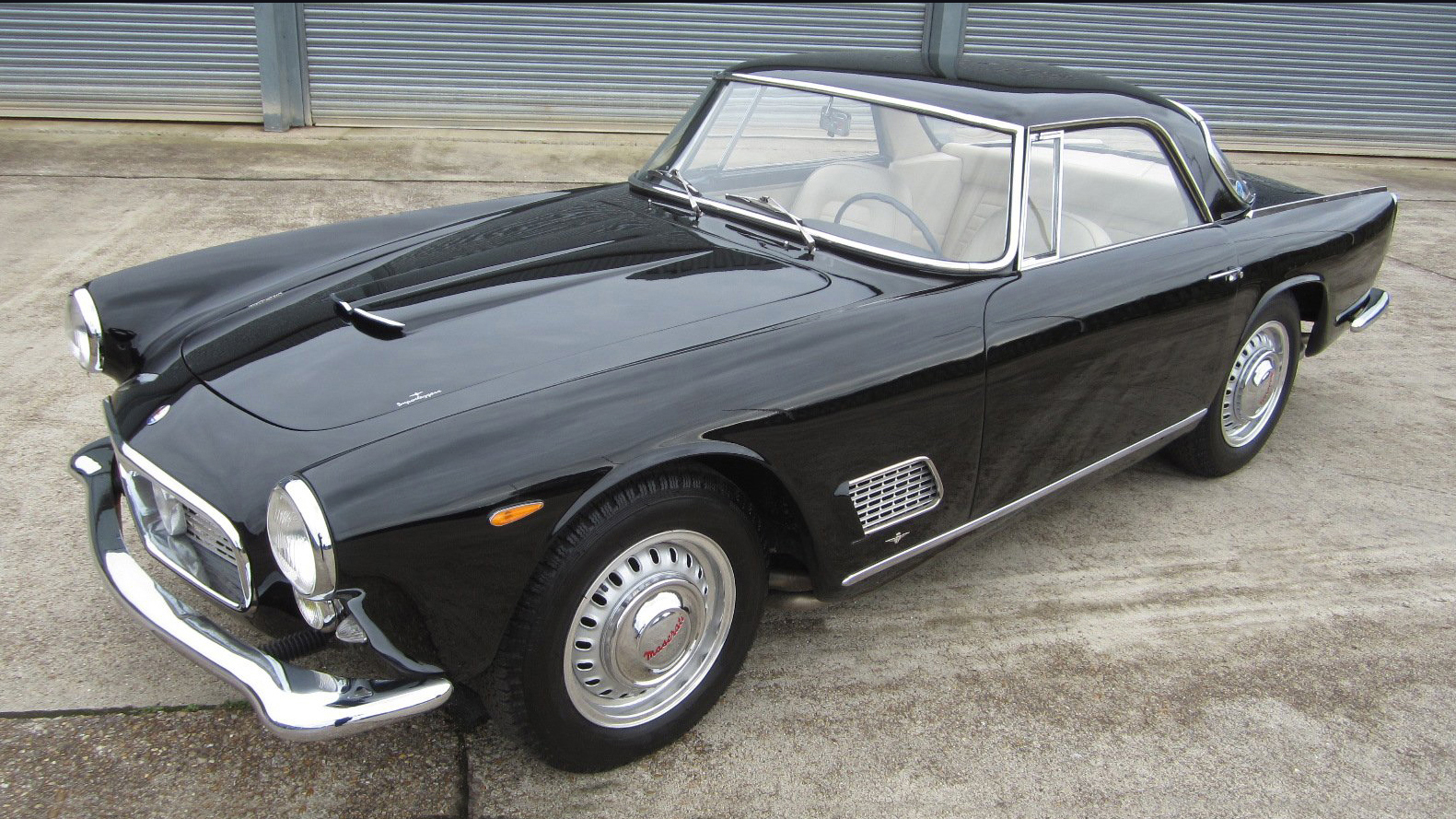
1960 Maserati 3500 (Photo Credit to Classic Automobiles Worldwide Ltd) 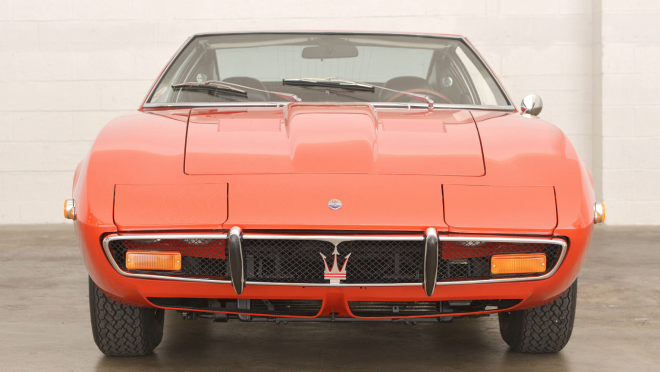
1972 Maserati Ghibli SS (Photo Credit to RM Sothebys)
Road car arrival
The Orsi family bought Maserati in 1937 and moved it to Modena.
The first Maserati road cars appeared 10 years later, with various A6 6-cylinder models built in small batches into 1956. Maserati built racecars into the early 1960s, including the Tipo 61 that earned its “Birdcage” nickname from a complex tube-frame chassis. Premier has leased a number of these now highly collectible Maserati sports racers from this period.
Serious road car production began in earnest with the 3500 GT, with some 2,000 coupes made from 1957 through 1963, along with 245 Spyders by Vignale and a handful of specials by other coachbuilders. The 3.5-liter inline six made up to 235 horse-power in later fuel-injected form. Maserati also built 3500 GT’s using the V8 derived from the 450S sports-racer. Around 30 were produced.
Maserati momentum
The 1962 coupe, essentially a successor to the 3500, won the 12 Hours of Sebring in a 450S in 1957. A six-cylinder Maserati 300S took second. Fewer than 600 were built through 1968, later models having a 4.0-liter version of the inline six. The option of a 3-speed automatic underscored the marque’s luxury GT persona.
The Frua-designed Quattroporte was billed as the world’s fastest sedan when it debuted for 1963. Just over 700 were built into 1969. Also in 1963 and designed by Frua was the Mistral. The Mistral was a shorter-wheelbase GT with a gorgeous Spyder companion. The 1965 Mexico, based on a shortened Quattroporte chassis, continued Maserati’s migration to V8 power.
Many feel that the 1967 Ghibli was the marque’s masterpiece.
Designed by Giorgetto Giugiaro for Ghia and powered by a 4.7-liter V8, the Ghibli’s stunning, angular form set the direction for a new generation of Maserati GTs to come.
A run of just under 1,200 coupes and 125 Spyders was similar to the Ferrari 365 GTB/4 Daytona, as was the 174-mph top speed of the later 4.9-liter Ghibli SS. A four-seat companion, the Maserati Indy, arrived for 1969.
French-Italian fusion
Change came in 1968, when Citroën purchased Maserati, a seemingly odd pairing that grew from the French carmaker’s contract to buy Maserati’s new V6 engine for its own Citroën SM grand tourer.
Under Citroen, Maserati produced a string of more advanced models, including the mid-engine Bora supercar and its V6 sibling, the Merak, and the Ghibli’s successor, the Khamsin.
In 1975, Citroen sold Maserati to Alejandro de Tomaso, the Argentine-born auto magnate renowned for the Ford-powered Mangusta and Pantera.
The 1977 Kyalami was a slightly restyled de Tomaso Longchamp coupe with a Maserati V8 in place of the Ford V8.
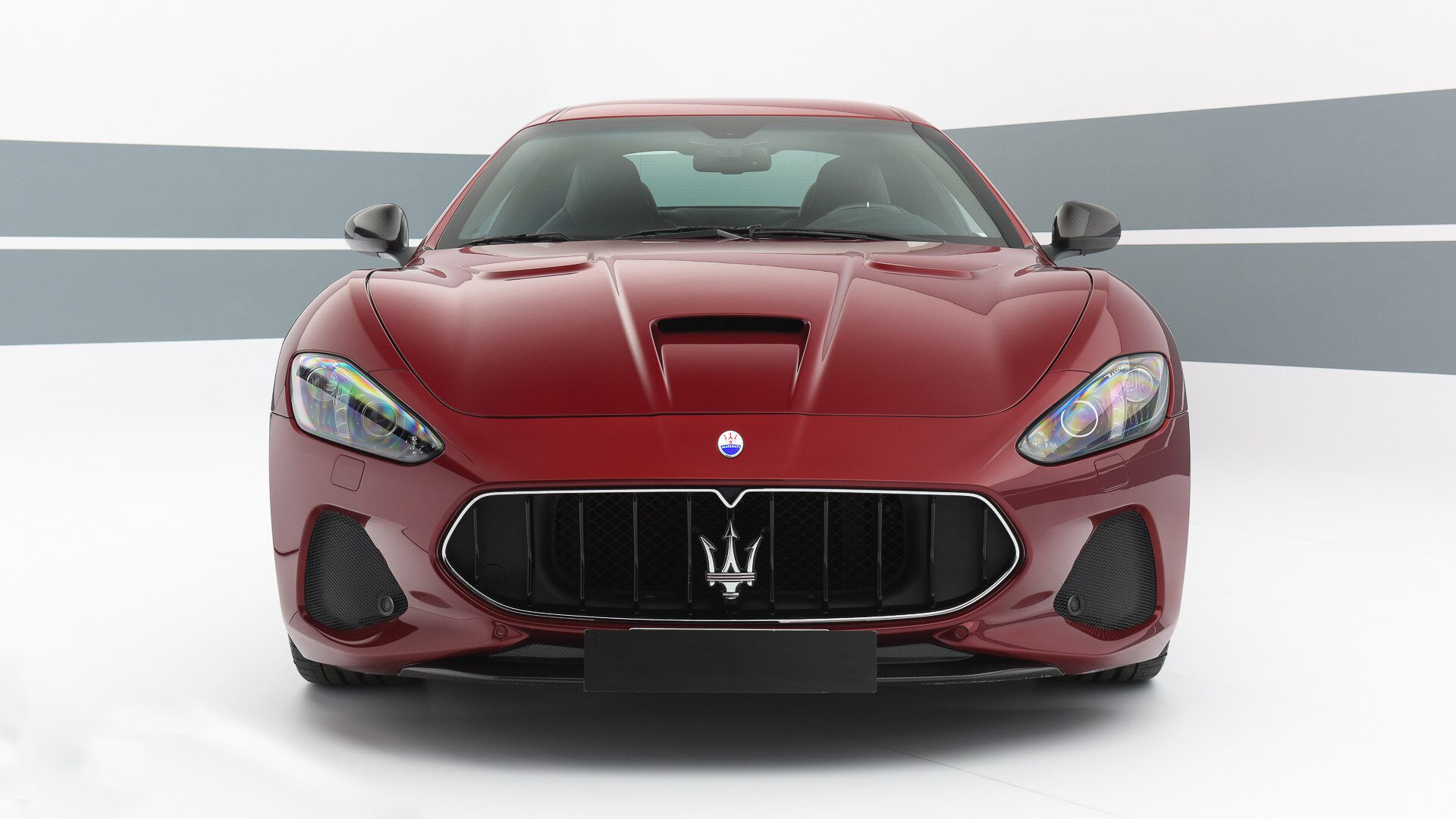
2019 Maserati Granturismo MC Stradale (Photo Credit to Maserati) 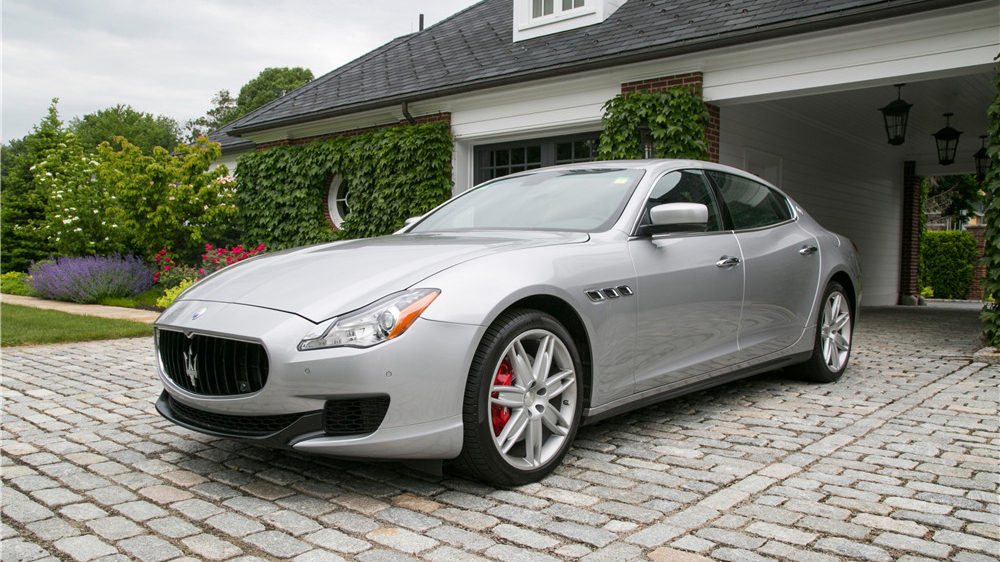
2014 Maserati Quattroporte (Photo Credit to Classic.com) 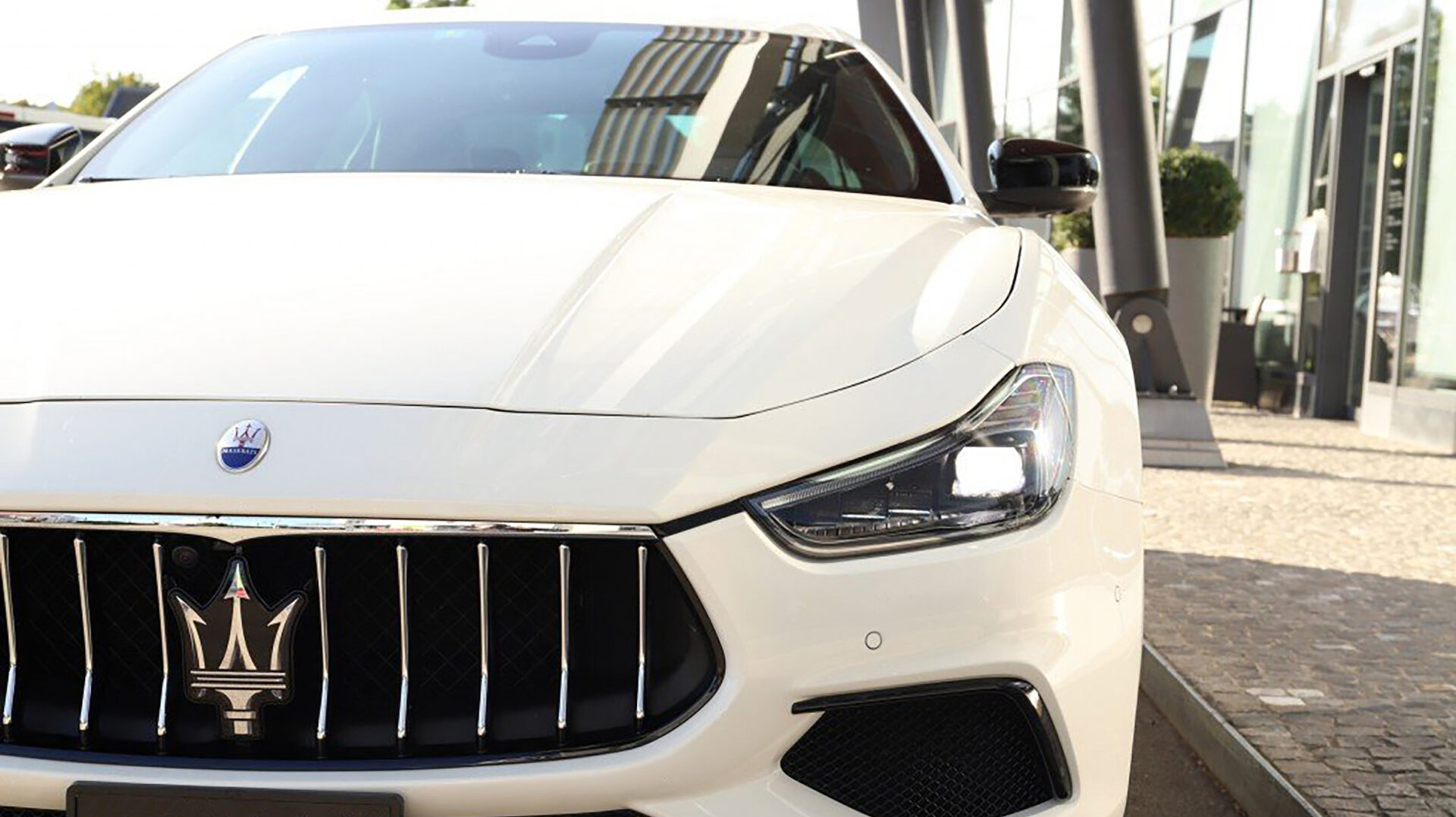
2018 Maserati Ghibli (Photo Credit to B.I. Collection Zurich) 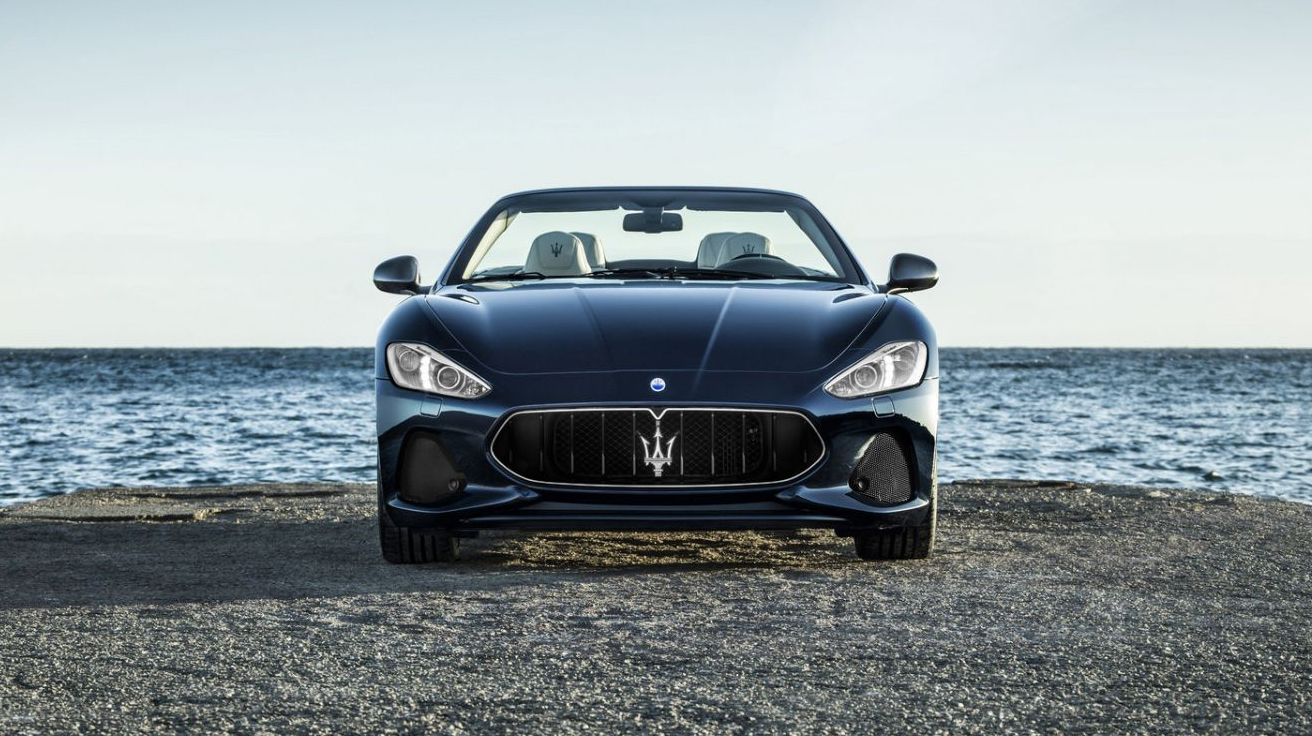
2020 Maserati Granturismo (Photo Credit to Maserati) 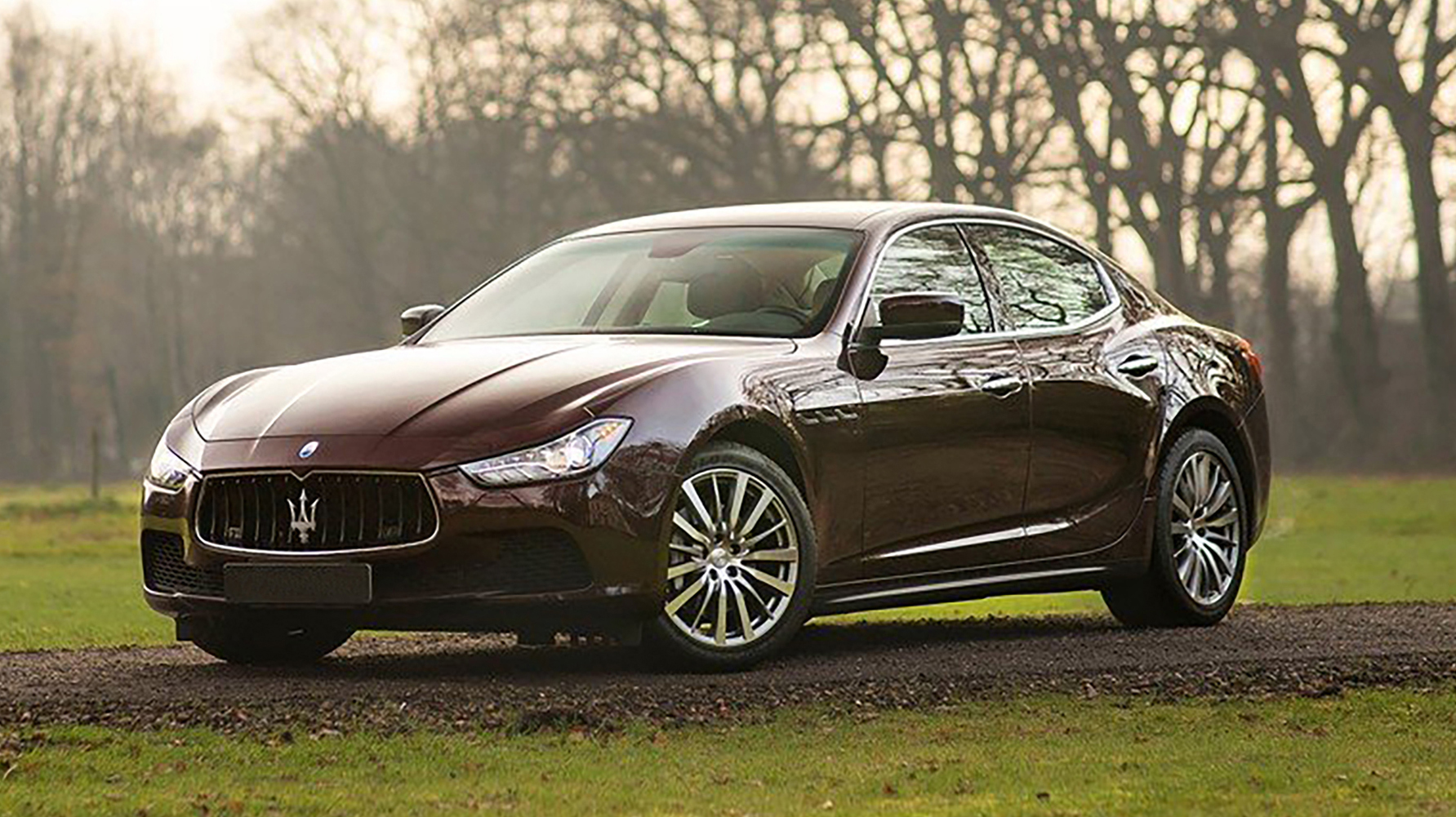
2014 Maserati Ghibli (Photo Credit to Prins Esclusivo)
A slight detour
The de Tomaso period is best known for a car that tested the strength of the Maserati name.
The 1985 Biturbo coupe resembled a BMW 3 Series and spawned a parade of offshoots. The plan to boost sales worked for a while but then fell apart, as did many Biturbos.
Chrysler owned a small portion of Maserati for a time, one result being the horrendous “Chrysler’s TC by Maserati.”
Fiat took over in 1993 and put Maserati back on a steady course, even assigning its engines to be developed with Ferrari. The Ghibli name now adorns a fast sport sedan in a size smaller than the Quattroporte. The GranTurismo line is currently the sole continuance of the great Maserati GT tradition.
The late FCA head honcho Sergio Marchionne told Automotive News in 2017 that all Maserati models following 2019 would have some form of electrification, whether hybrid or full EV. The good news is that, as we have seen from Tesla, EV can mean high-performance.
Maserati & Premier, the perfect match
Whether you’ve got your eye on a classic 1960s Maserati or one of the latest Ghibli or Quattroporte sedans, GranTurismo models or the Levante SUV, your first call should be to Premier Financial Services for a Maserati lease.
Premier has written hundreds of Maserati leases and has worked with Maserati dealers across the country. Our portfolio has included some great vintage and unique models. Contact us when you’re ready to shop.
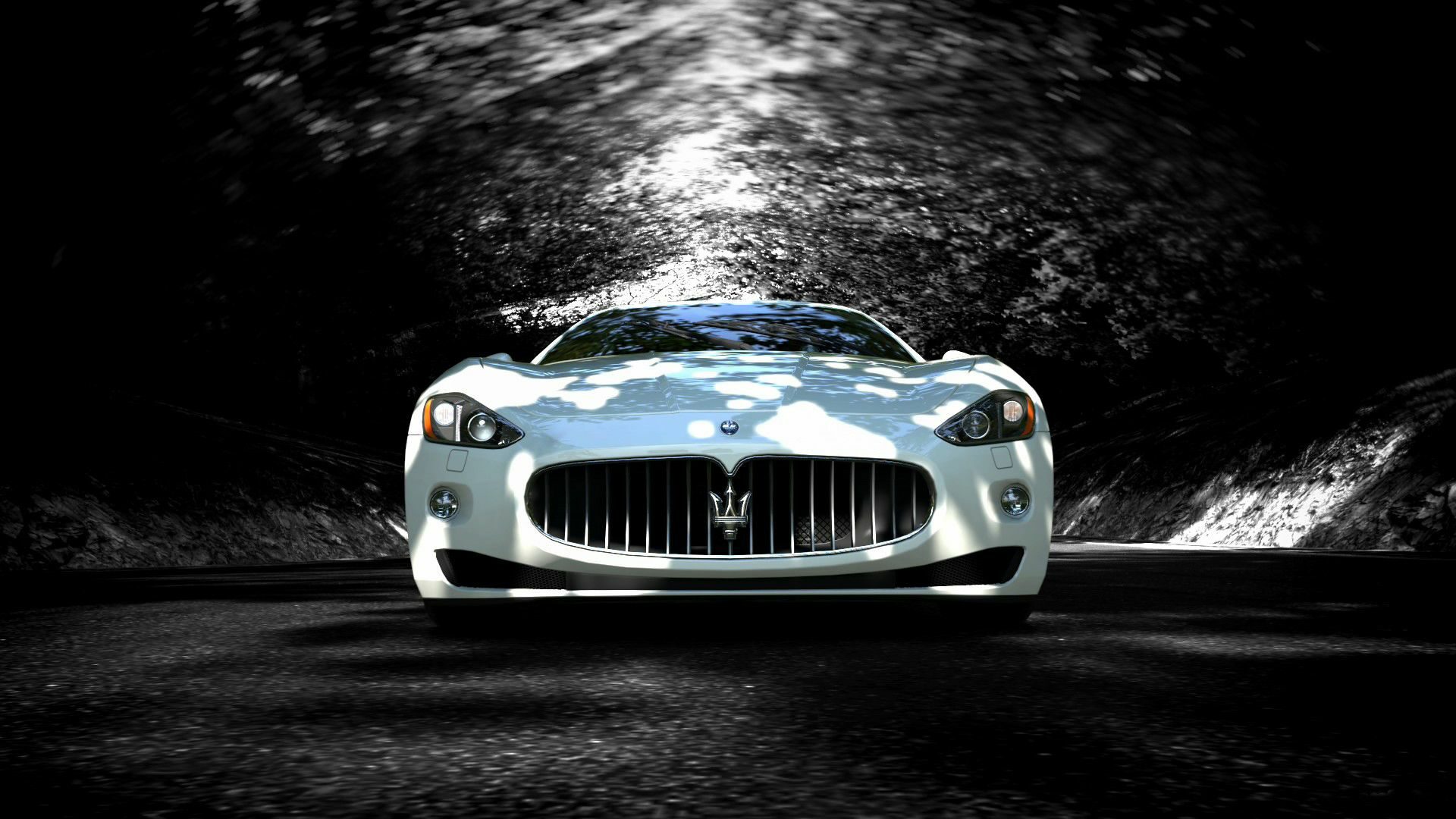
2015 Maserati Quattroporte (Photo Credit to Maserati)
